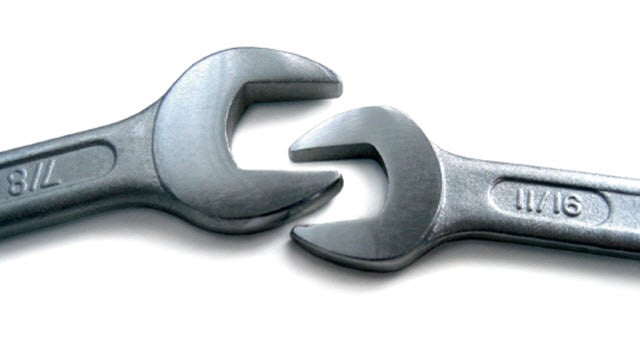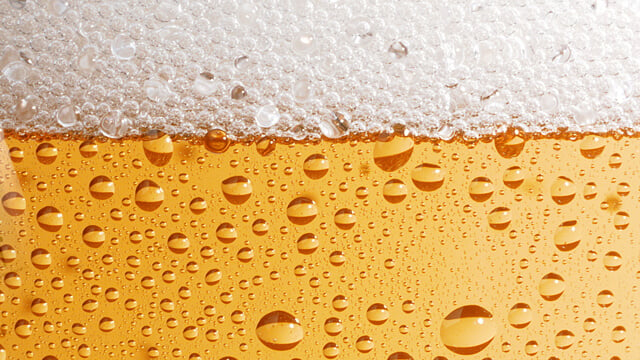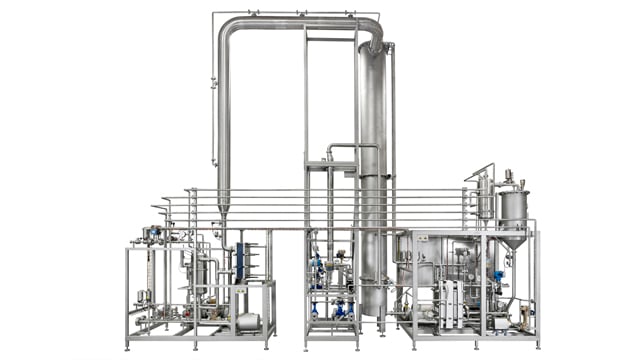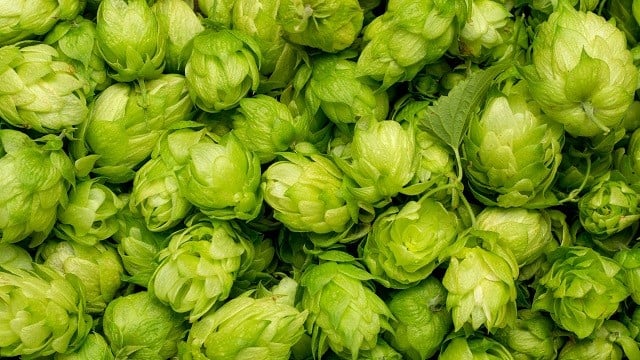De-alcoholization module
Alfa Laval’s fully automated Beer dealcoholizers are plug-in solutions that remove alcohol efficiently and gently in a single-pass to produce full-flavoured beers. They are designed to help brewers tap into fast-growing and profitable low and no-alcohol beer market as people search for healthier options. The modular design makes it simple to add non-alcoholic brewing capability without the need for major capital investment.
More than 25 years of technological advances experience of LAB/NAB production to help you succeed
- Single-pass stripping at low temperatures and short residence times make for high quality, high flavour dealcoholized products
- High flow rates – up to 100 hl/h for 0.0% and <0.5% beers
- Easy to install and integrate thanks to prefabricated, modular plug-in solution
- Low running and maintenance costs (no rotating parts in stripping column)
- Single source supply for peace of mind
Alfa Laval has more than 25 years of experience in the production of both 0.0 beer and <0.5 % abv beer and is the world leader in stripping column technology. our range of beer dealcoholizers comes in three standard capacities: 10, 50 and 100 hl h. they can be configured to recover and dose aroma from the feed beer back into the product to maintain the all-important flavour and produce exceptional results for consumers.
Our advanced cost-effective, standardized solutions and systems for removing or reducing alcohol in beer can help brewers tap into the fast-growing and profitable low and no-alcohol beer market as people across the world search for healthier options.
Our modules are backed by the global Alfa Laval Support Service, which includes start up, and training, site audits and upgrades.
Global service
Our modules are backed by the global Alfa Laval Support Service, which includes start up, and training, site audits and upgrades.

How it works
The Alfa Laval Dealcoholization Module is an innovative combination of Alfa Laval technologies working together as a well integrated system. The fully automated module makes it easy to remove alcohol from beer at low temperature and pressure using a single pass through a vertical stripping column.
The beer is first degassed, with any condensable volatiles returned back to the beer stream. The alcohol present in the flow of feed beer is removed in a special vertical stripping column that enables high desorption by flowing a stripping gas (culinary steam) up a tower of densely packed material (proprietary to Alfa Laval) under conditions that are close to a vacuum. The material optimizes the stripping process by maximizing the effective contact area between the beer and the stripping gas.
The production capacity is set by regulating the incoming beer flow prior to routing to the liquid distributor at the top of column. This distributor then disperses beer into the column, where it trickles downwards against the flow of the stripping gas injected at the base of the column and rising up through it.
The vapour stripped out of the beer consists of steam, alcohol and other volatiles. It vents from the top of the column to a plate heat exchanger, which cools the vapour into an alcohol condensate stream.
A final vacuum phase removes any remaining non-condensable volatiles. A glycol-side recirculation pump minimizes any risk of the stripped vapour stream freezing during condensing.
One key benefit of this stripping principle is its exceptionally effective alcohol removal at low temperature and pressure. There is no need for recirculation to achieve the required specifications for the final dealcoholized beer.
The system includes a recirculation loop if any additional stripping is required. Stripping efficiency can also be boosted by regulating the temperature of the beer before it is passed into the column, or by altering the pressure in the system.
This fully automated, energy-efficient module provides reliable single-pass alcohol removal using an exceptionally effective stripping principle at low temperature and pressure to keep operating costs at a bare minimum.
3 reasons why demand for low - or non-alcoholic beer is growing
Sales of non-alcoholic beer have risen nearly 18% in the past five years in Western Europe, Euromonitor reports. And forecasts show that sales will continue to climb by another 12% by the end of 2022. This trend is notable not only in Europe but also in the Middle East, Africa, and the Asia-Pacific region. Here you see Saudi Arabia, Nigeria, Spain, the UAE and Kenya are the top markets for non-alcoholic beer.
What are the key drivers for beer dealcoholization?
1) Alcohol-free beer is a great alternative for consumers who don’t drink beer or alcohol. It’s a source of new revenues and a growing niche for breweries.
2) Non-alcoholic beer is beer-based drink alternative for people who drink beer but see clear benefits, such as responsible drinking, healthier lifestyles, lower calories, and great taste.
3) With technology advancement, you can get full-flavoured, non-alcoholic beer. The quality and taste of non-alcoholic beer has improved a lot with the right innovation.
Therefore, making low or no-alcohol beer is a clear driver for profitable growth around the world. Major brewery groups are investing a lot of money in making and marketing alcohol-free beer.
How to remove alcohol content from beer?
1) Removal of Alcohol From Beer Using Distillation
Traditionally, distillation is used to remove alcohol from beer. It is a physical process where components in a mixed stream are divided by different boiling point. Some components of a liquid mixture have a lower boiling point than others. As the temperature increases, certain components are separated and concentrated by being boiled off. If temperatures exceed the boiling points, alcohol evaporates much more quickly than water does. Cooling the resulting vapours then produces a high percentage of alcohol. The resulting residue liquid becomes the non-alcoholic beer.
With distillation, boiling the beer is key for ethanol extraction. There are some disadvantages. First, the residence time at boiling temperature is longer (compared to the short stripping residence time) to enable efficient distillation and phase separation. Second, burnt taste.
2) Removal of Alcohol From Beer Using Stripping
Stripping is a gentle, single-pass process that requires less than a minute of residence time that removes ethanol from a liquid stream using a gas stream in counter-current flow based on mass balance.
It is an exceptionally effective way to remove alcohol at low temperature and pressure, because stripping always occurs in equilibrium. The temperature is never too high to cause boiling (distillation, not desired) or never too low to cause flooding or dilution (also not desired). There’s no boiling, just highly effective separation using process soft water (<10 DH) vapor stream flow in optimal conditions.
This does away with any need for recirculation to achieve the required specifications for the final dealcoholized beer.
Learn more about beer dealcoholication using advanced stripping technology
3) Removal of Alcohol From Beer Using Membrane Filtrations
With the use of reverse osmosis spiral membranes in a high-hygiene set-up, with the process taking place at temperatures of 10-20ºC (50-68ºF) or less, one can get in a high-quality low or non-alcoholic beer whose flavour is unaffected by heating.
The membranes separate the feed beer into two streams. The permeate stream – consisting of water and alcohol – passes through the membranes. The retentate stream – consisting of concentrated proteins, colour and flavour compounds – doesn't, and can be led back to the beer tank. This is the basic principle behind beer dealcoholication using membrane processes.
Learn more about beer dealcoholication using advanced membrane technology
Let us help you tap into an exciting and profitable market
Low and no-alcohol beers are set to make significant inroads into the mainstream market. This will give rise to important choices and challenges with respect to flavour, technology capabilities and cost-effectiveness. We understand the process of removing alcohol from beer. Get in touch with us and let’s discuss the possibilities for your brewery.
Be inspired
There is a steady, substantial and global move towards beers featuring less alcohol. Some brewery experts reckon that by 2020 as much as 20% of all the beer sold will fall into the so-called “healthy” category. For “healthy”, read “with alcohol content removed”. But how can one use the removed alcohol?




